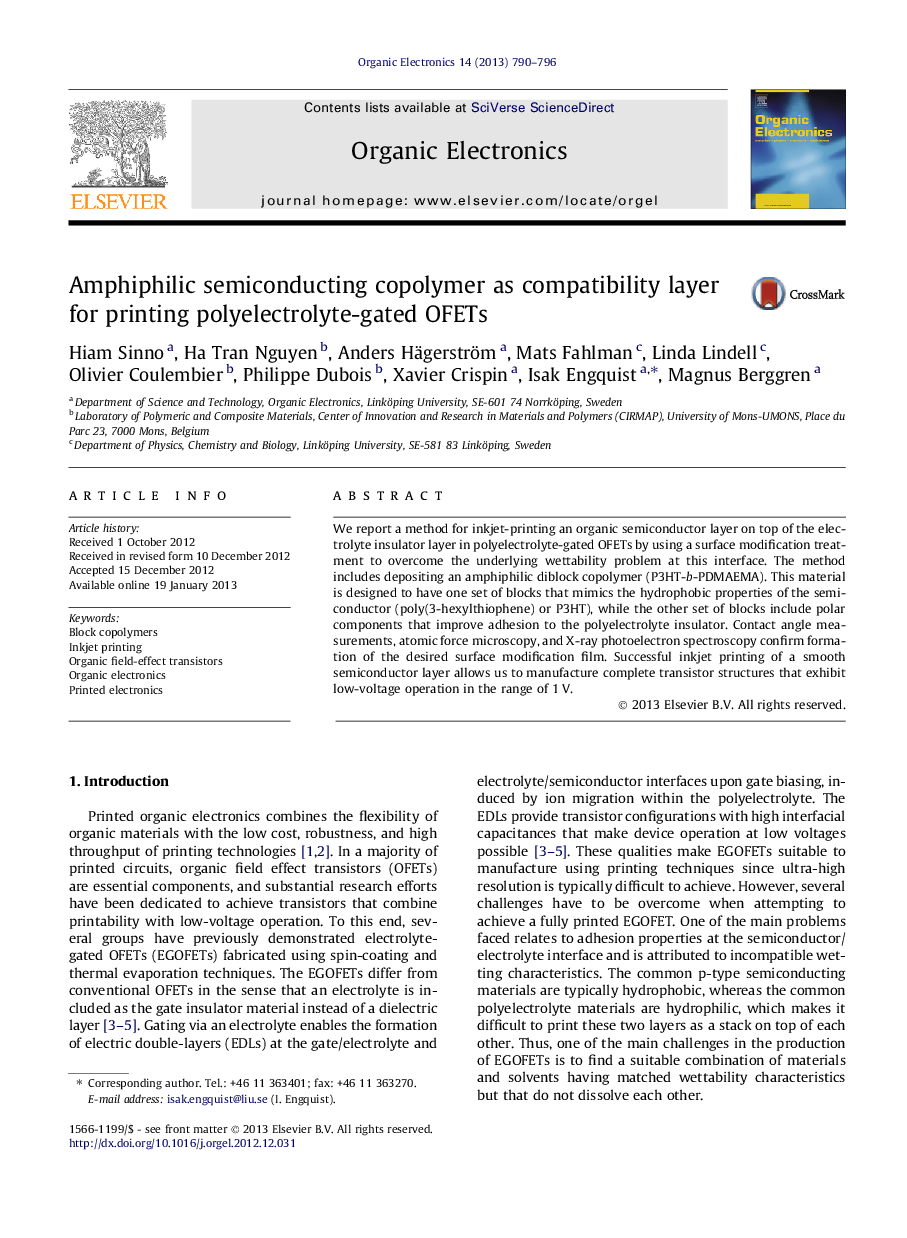| Article ID | Journal | Published Year | Pages | File Type |
|---|---|---|---|---|
| 1267414 | Organic Electronics | 2013 | 7 Pages |
We report a method for inkjet-printing an organic semiconductor layer on top of the electrolyte insulator layer in polyelectrolyte-gated OFETs by using a surface modification treatment to overcome the underlying wettability problem at this interface. The method includes depositing an amphiphilic diblock copolymer (P3HT-b-PDMAEMA). This material is designed to have one set of blocks that mimics the hydrophobic properties of the semiconductor (poly(3-hexylthiophene) or P3HT), while the other set of blocks include polar components that improve adhesion to the polyelectrolyte insulator. Contact angle measurements, atomic force microscopy, and X-ray photoelectron spectroscopy confirm formation of the desired surface modification film. Successful inkjet printing of a smooth semiconductor layer allows us to manufacture complete transistor structures that exhibit low-voltage operation in the range of 1 V.
Graphical abstractFigure optionsDownload full-size imageDownload as PowerPoint slideHighlights► A novel amphiphilic block copolymer (BC) is used in the fabrication of polyelectrolyte-gated OFETs. ► The BC serves as a compatibility layer between the semiconductor and polyelectrolyte layer. ► The BC renders the electrolyte layer hydrophobic which enables inkjet printing of the semiconductor layer on top. ► The BC treatment does not cause any considerable electrical interference in the transistor functionality.
